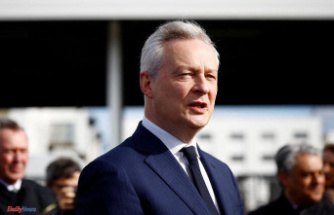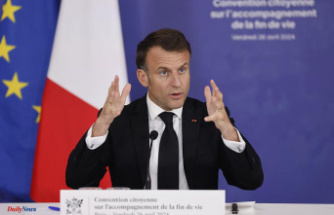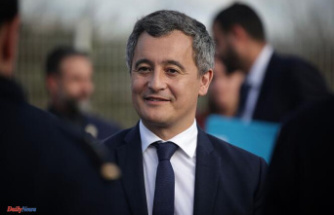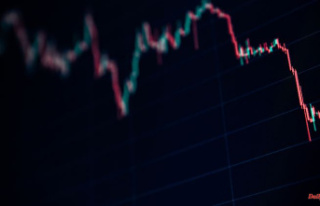Bakhmut, Kreminna, Cherson: In the war in Ukraine, heavy, sustained fighting is raging on several front sectors. The Ukrainians are not on the rise everywhere. A look at the currently most important hotspots.
In the fight against the Russian invasion, the Ukrainian autumn offensives are apparently encountering increasing resistance: the days of deep advances seem to be over, and the Ukrainian advance in eastern Ukraine towards Luhansk has made little progress over the past few days. Russian troops were apparently able to hold the hastily erected defense lines west of the town of Swatowe. According to Russian reports, there were even limited counterattacks further south near Kreminna.
The fighting is ongoing: according to reports from Ukrainian and Russian sources, there are currently heavy fighting on other front sections. Accordingly, fighting is taking place on the southern front in the Zaporizhia area, in the Cherson region on the western bank of the Dnipro and on the Donbas front. Unlike at Cherson, Kreminna and Svatove, the Russian military is still on the offensive there with the battle for Bakhmut.
The Russian army's offensive efforts seem to be concentrating on small territorial gains on the Donbas front: The Russian large-scale attack on Bakhmut has been underway for weeks, but so far only very limited progress has been made. Nevertheless, the Russians keep pushing new units into the hail of bullets. So far, the Ukrainians have largely been able to fend off all attempts to attack. Since the summer there have been fierce and probably very costly positional battles in the region. Only occasionally can the Russian military report the capture of other towns, only to then have to give way to the Ukrainians again.
The destruction is enormous: With heavy artillery, both sides fire at known or suspected positions of the enemy in the hilly landscape characterized by mining. On the Russian side, separatists, regular army and Wagner mercenaries fight their way across old dumps and abandoned industrial sites to the outskirts of Bakhmut, formerly Artemivsk. The defenders have so far been able to withstand the massive Russian attacks. It is unclear how high the losses on the Ukrainian side are. Putin's army, however, pays a high price in men and material for every meter of territory gained.
The Russians' remarkably clumsy strategy apparently takes no account of their own losses: Ukrainian reports indicate a high death toll among the ever-new waves of attackers. And despite the deployment of all available forces, the Russian offensive at Bakhmut seems to be stuck. With all their might, the Russian troops are attacking well dug-in defensive positions. Do Putin's strategists want to force a decision here?
The Ukrainians' defensive success is based on several obvious reasons: On the one hand, the front line follows the old contact line for long stretches. Ukrainians and separatists supported by Russia have been facing each other in massively expanded positions, some since 2014. In the once densely populated region, there are also extensive towns that can usually only be conquered in bloody house-to-house combat. Experienced troops are also deployed on the Ukrainian side, equipped with Western precision weapons.
Further north, in the Luhansk region, the situation is different: after the fall of Izyum in early September and Lyman in late September, Western observers expected the city of Kreminna to be liberated soon - but the recapture is dragging on. Like the town of Svatowe, Kreminna is on the P66 Ukrainian trunk road. Both cities are strategically important transport hubs. Large parts of the Russian supplies for the Donbas front pass through here. After the retreat from Lyman, the Russian troops were apparently able to set up a new line of defense here, from which counterattacks on Ukrainian troops may also be launched.
The general staff in Kyiv is still reluctant to publish details on the exact extent of the fighting and Ukrainian positions. Recently, however, the military leadership of Ukraine indirectly confirmed Russian attacks on settlements such as Torske near Sarichne. The town is on the Lyman-Kreminna road and was liberated by the Ukrainians almost two weeks ago. In the meantime, according to consistent reports, the front line had shifted almost 15 kilometers to the east.
A look at the map explains why the fronts are moving back and forth so quickly in this region on the northern bank of the Seversky Donets. In the largely flat terrain between Zarichne and Kreminna there is little cover, no major towns and few natural obstacles. Motorized formations can dare rapid advances, but can hardly hold the area due to lack of cover.
Both sides fire at each other with heavy weapons from a distance. Attacks and counterattacks can quickly advance several kilometers. However, neither Russians nor Ukrainians can claim real control over the tracts of land in between. The area between Torske and Kreminna is a kind of no man's land. The situation remains in flux for the time being.
Larger movements could soon also occur in the Cherson region. In the southwest of Ukraine, the Russian occupiers on the west bank of the Dnipro have been under massive pressure since late summer. The supply situation for the Russian troops is difficult, and the retreat routes are partially cut off. Ukrainian precision strikes have made the few bridges over the Dnipro River, which is almost a kilometer wide here, almost impassable. For the past few weeks, Russian supplies have mostly only been delivered via improvised pontoon ferries.
Ukrainian offensive operations are underway west, north and northeast of the port city of Kherson. So far, the elite groups transferred to the region by Putin's generals have largely been able to hold their positions. Recent announcements from the Russian side, however, indicate a Ukrainian superiority: the regional administrator appointed by Russia ordered the "evacuation" of civilians. Military experts in London, Paris and Washington expect new Ukrainian advances. Possibly, it is said, Russia is preparing to withdraw its own military forces from the Cherson area. The abandonment of the Russian-controlled areas west of the Dnipro would be another spectacular Ukrainian victory.












